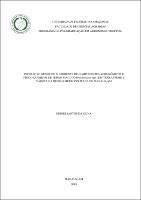| ???jsp.display-item.social.title??? |


|
Please use this identifier to cite or link to this item:
https://tede.ufam.edu.br/handle/tede/7055Full metadata record
| DC Field | Value | Language |
|---|---|---|
| dc.creator | Silva, Edinei Santos da | - |
| dc.creator.Lattes | http://lattes.cnpq.br/6107693472314948 | por |
| dc.contributor.advisor1 | Atroch, André Luiz | - |
| dc.contributor.advisor1Lattes | http://lattes.cnpq.br/8290059714368057 | por |
| dc.contributor.referee1 | Caetano, Aldenir de Carvalho | - |
| dc.contributor.referee1Lattes | http://lattes.cnpq.br/9938931463053838 | por |
| dc.contributor.referee2 | Fernandes, Rinaldo Sena | - |
| dc.contributor.referee2Lattes | http://lattes.cnpq.br/3816854587667071 | por |
| dc.contributor.referee3 | Gama, Aildo da Silva | - |
| dc.contributor.referee3Lattes | http://lattes.cnpq.br/4068531556614196 | por |
| dc.contributor.referee4 | Palheta, Rosana Antunes | - |
| dc.contributor.referee4Lattes | http://lattes.cnpq.br/3498476988120030 | por |
| dc.date.issued | 2019-02-28 | - |
| dc.identifier.citation | SILVA, Edinei Santos da. Interação genótipo x ambiente de componentes agronômicos e físico-químicos de feijão-macuco (Pachyrhizus spp.) em terra firme e várzea na região metropolitana de Manaus-AM. 2019. 93 f. Tese (Doutorado em Agronomia Tropical) - Universidade Federal do Amazonas, Manaus, 2019. | por |
| dc.identifier.uri | https://tede.ufam.edu.br/handle/tede/7055 | - |
| dc.description.resumo | O feijão-macuco (Pachyrhizus spp.) é uma espécie produtora de raízes tuberosas comestíveis e sementes tóxicas, e nativa na região Amazônica. Seu melhoramento ainda não foi realizado, sendo necessário avaliar o potencial produtivo e selecionar genótipos de interesses diversos. O objetivo deste trabalho foi testar o desempenho agronômico, e verificar a adaptabilidade e estabilidade de feijão-macuco do banco de germoplasma do INPA em terra firme e em várzea, seguindo o delineamento de blocos completos ao acaso com 64 genótipos, três repetições e oito plantas por parcela. Por ocasião da colheita se avaliaram a produtividade e número de raízes tuberosas por planta. Os resultados mostram que apenas a produtividade das raízes tuberosas é influenciada pela interação GxE. A Decomposição da Soma de Quadrados da Interação Genótipo x Ambiente e o Biplot mostraram os genótipos adaptados aos ambientes de terra firme ou várzea, assim como, identificou aqueles mais estáveis. Para o número de raízes por planta, o genótipo P52 é mais adaptado a terra firme, o P2 melhor adaptado a várzea, e o P45 o mais estável e portanto mais adaptado a ambos ambientes. Quanto a produtividade das raízes em t/ha1 os genótipos P13, P27, P64, P7, e P50 se destacaram como mais adaptados a terra firme e com melhores médias. O P35 mais adaptado ao ambiente de várzea. Os mais estáveis foram o P22, P38 e P49. Isto indica que o melhoramento de feijão-macuco, na região de várzea e terra firme da Amazônia brasileira, pode ter sucesso para aumentar a produtividade dos caracteres avaliados. | por |
| dc.description.abstract | Yam bean (Pachyrhizus spp.) is a species that produces edible tuberous roots and toxic seeds, and is native to the Amazon region. Its improvement has not yet been realized, being necessary to evaluate the productive potential and to select genotypes of diverse interests. The objective of this work was to test the agronomic performance and to verify the adaptability and stability of yam bean of the INPA germplasm bank in terra firme and floodplain, with a complete randomized block design with 64 genotypes, three replicates and eight plants per plot. At the time of harvest the productivity and number of tuberous roots per plant were evaluated. The results show that only the productivity of the tuberous roots is influenced by the interaction GxE. The Decomposition of the Sum of Squares of the Genotype x Environment Interaction and the Biplot showed the genotypes adapted to the environments of terra firme or várzea, as well as, identified those more stable. The characteristic number of roots per plant showed the P52 most adapted to terra firma, the P2 best adapted to várzea, and P45 the most stable and therefore more adapted to both environments. The characteristic productivity of roots t/ha1 showed P13, P27, P64, P7, and P50 more adapted to terra firma and with better means. The P35 was the most adapted to the floodplain environment. The most stable were P22, P38 and P49. This indicates that the yam bean improvement in the lowland and terra firme region of the Brazilian Amazon region may succeed to increase the productivity of the evaluated characters. | eng |
| dc.description.sponsorship | CAPES - Coordenação de Aperfeiçoamento de Pessoal de Nível Superior | por |
| dc.format | application/pdf | * |
| dc.thumbnail.url | https://tede.ufam.edu.br//retrieve/29393/Tese_EdineiSilva_PPGAT.pdf.jpg | * |
| dc.language | por | por |
| dc.publisher | Universidade Federal do Amazonas | por |
| dc.publisher.department | Faculdade de Ciências Agrárias | por |
| dc.publisher.country | Brasil | por |
| dc.publisher.initials | UFAM | por |
| dc.publisher.program | Programa de Pós-graduação em Agronomia Tropical | por |
| dc.rights | Acesso Aberto | por |
| dc.subject | Hortaliça negligenciada | por |
| dc.subject | Segurança alimentar | por |
| dc.subject | Diversidade de fejão-macuco | por |
| dc.subject | Neglected vegetable | eng |
| dc.subject | Food security | eng |
| dc.subject.cnpq | CIÊNCIAS AGRÁRIAS: AGRONOMIA | por |
| dc.title | Interação genótipo x ambiente de componentes agronômicos e físico-químicos de feijão-macuco (Pachyrhizus spp.) em terra firme e várzea na região metropolitana de Manaus-AM | por |
| dc.title.alternative | Interaction genotype x environment of agronomic and physico-chemical components of yam bean (Pachyrhizus spp.) on solid ground and várzea in the metropolitan region of Manaus-AM | por |
| dc.type | Tese | por |
| Appears in Collections: | Doutorado em Agronomia Tropical | |
Files in This Item:
| File | Description | Size | Format | |
|---|---|---|---|---|
| Tese_EdineiSilva_PPGAT.pdf | 4.58 MB | Adobe PDF |  Download/Open Preview |
Items in DSpace are protected by copyright, with all rights reserved, unless otherwise indicated.




